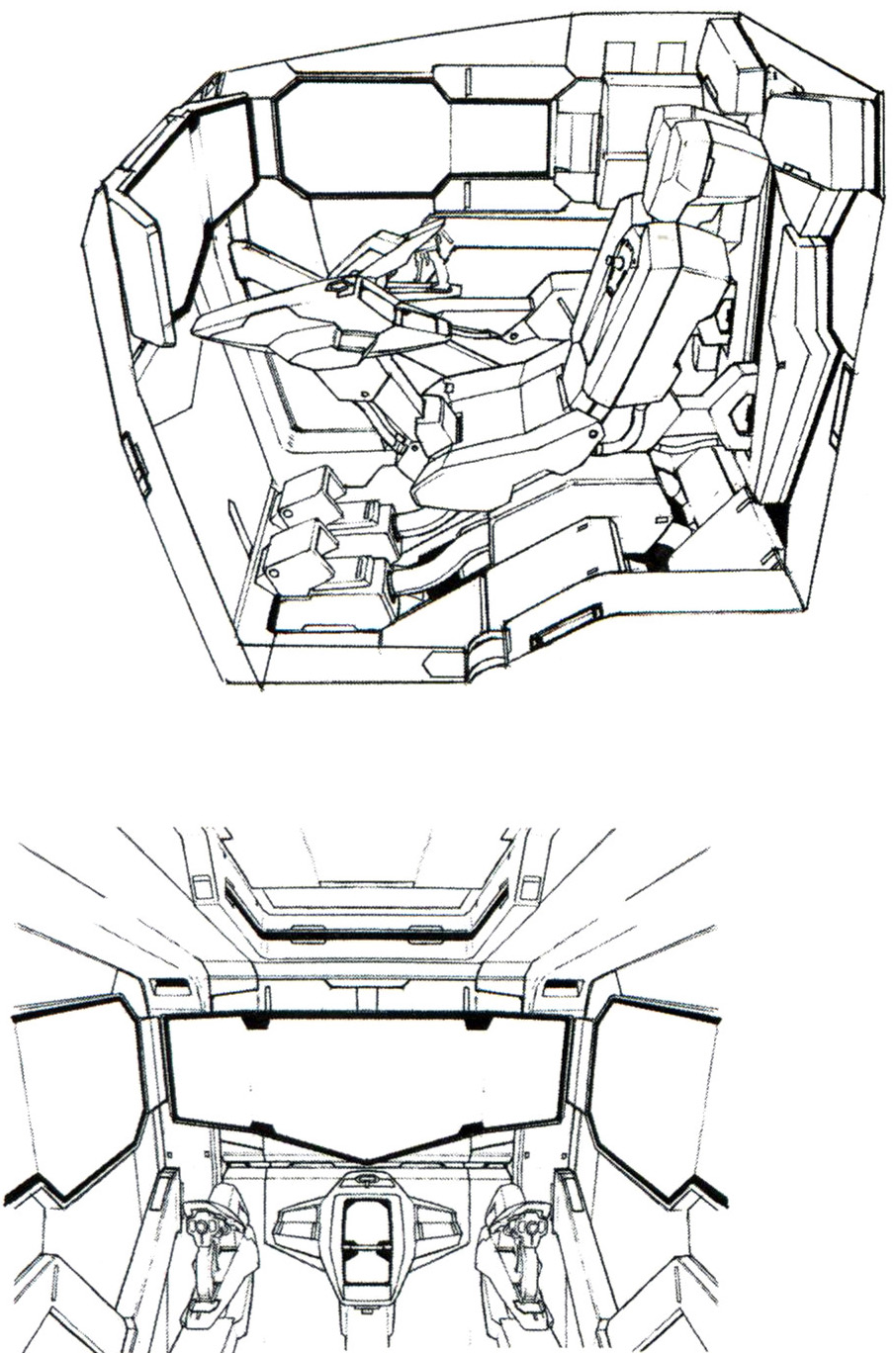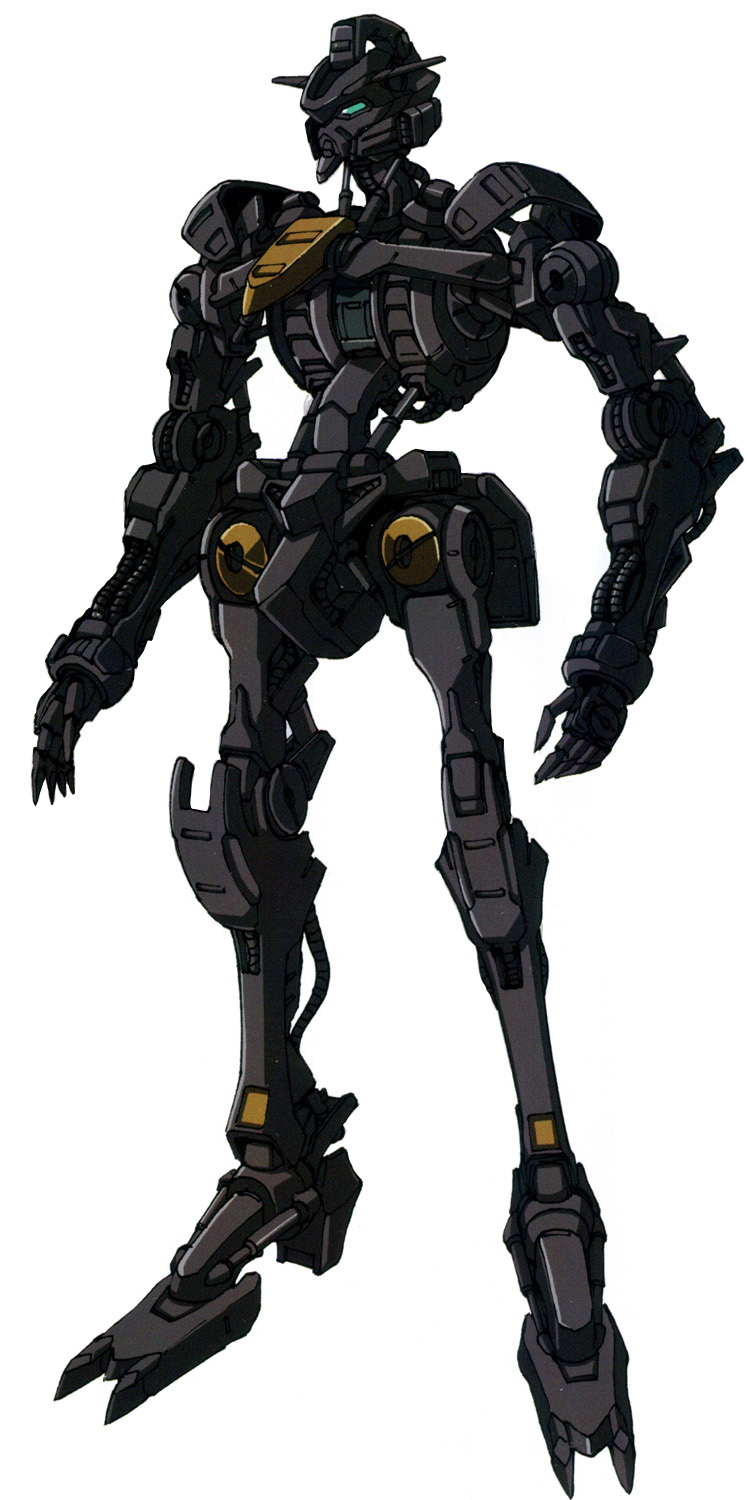Model number: ASW-G-01
Code name: Gundam Bael
Unit type: close combat mobile suit
Manufacturer: Gjallarhorn
Operator: Gjallarhorn
Rollout: unknown
First deployment: unknown
Accommodation: pilot only, in standard cockpit in torso using Alaya-Vijnana System
Dimensions: overall height 18.0 meters
Weight: empty 30.0 metric tons; max gross weight unknown
Armor materials: nanolaminate armor on Gundam Frame
Powerplant: 2 x Ahab reactor, power output rating unknown
Propulsion: Ahab thrusters: total output unknown
Performance: unknown
Equipment and design features: sensors, range unknown; Alaya-Vijnana System, interfaces directly with pilot’s spinal cord implants
Fixed armaments: 2 x electromagnetic cannon, mounted in wing thrusters
Optional hand armaments: 2 x Bael sword, mounted in blade holders on rear skirt armor
More than 300 years ago, Gjallarhorn created 72 Gundam Frames in an effort to fight off the existential threat of unmanned mobile armors during the Calamity War. Compared to standard mobile suits, these high performance machines each mounted two Ahab reactors. The Gundams also utilized the Alaya-Vijnana System, a man-machine interface in which plugs from the cockpit would connect to spinal cord implants protruding from the pilot’s back. This system allowed data to flow both ways between the Gundam and the pilot’s brain, and it also allowed for human-like movement. However, exceeding the system’s safety limits could permanently injure the pilot’s body. The names and model numbers of all the Gundams corresponded to the names and ranks of demons from the Lesser Key of Solomon. The ASW-G-01 Gundam Bael was named after the demon King Bael.
The Gundam Bael’s armaments included a pair of electromagnetic cannons mounted in its wings and two Bael swords made from the same rare material as mobile suit frames. The Bael swords’ blade holders featured a pair of moving arms that minimized the time needed to draw the weapons. During the Calamity War, the Gundam Bael was the personal unit of Gjallarhorn founder Agnika Kaieru. After leading Gjallarhorn to victory against the scourge of unmanned mobile armors, the Gundam Bael took on great symbolic significance within the organization and was placed on display at its headquarters, Vingolf. Three centuries later, a boy named McGillis was adopted by Iznario Fareed, leader of one of the Seven Stars families that ruled Gjallarhorn. After enduring years of sexual abuse at Iznario’s hands, McGillis devised a plan to topple the Seven Stars and create a new world order. His plan centered on mastering the Gundam Bael and using its symbolic power to win the loyalty of Gjallarhorn soldiers. To accomplish this, McGillis used data from the creation of the EB-AX2 Graze Ein to secretly (and successfully) undergo the Alaya-Vijnana surgery as an adult. McGillis launched his rebellion, but it never gained the traction he expected, and his forces were pushed to retreat to Mars. McGillis was mortally wounded in a mobile suit battle against his former friend Gaelio Bauduin’s ASW-G-66 Gundam Kimaris Vidar, and soon after he succumbed to his injuries. Afterward, the defeat of McGillis’ allies Tekkadan marked the end of what was later known as the McGillis Fareed Incident.
Pilot(s): Agnika Kaieru, McGillis Fareed
First appearance: Mobile Suit Gundam: Iron-Blooded Orphans
Original mechanical designer: Naohiro Washio
Iron-Blooded Orphans Info
Director:
Tatsuyuki Nagai
Writer(s):
Mari Okada
Hajime Kamoshida
Michihiro Tsuchiya
Toshizo Nemoto
Shinsuke Onishi
Hiroyuki Yoshino
Mayori Sekijima
Tatsuto Higuchi
Yousuke Kuroda
Mechanical Designer(s):
Naohiro Washio
Kanetake Ebikawa
Ippei Gyoubu
Kenji Teraoka
Tamotsu Shinohara
Character Designer(s):
Yu Ito
Michinori Chiba
Musical Composer:
Masaru Yokoyama
Format:
50 episodes; 9 compilation episodes
Airdates (TV):
Japan 10.04.2015 – 03.27.2016 (S1);
10.02.2016 – 04.02.2017 (S2)
U.S. 06.04.2016 – 12.11.2016 (S1);
10.08.2017 – 04.28.2018 (S2)
Airdates (SE):
Japan 04.29.2022 –










Comments